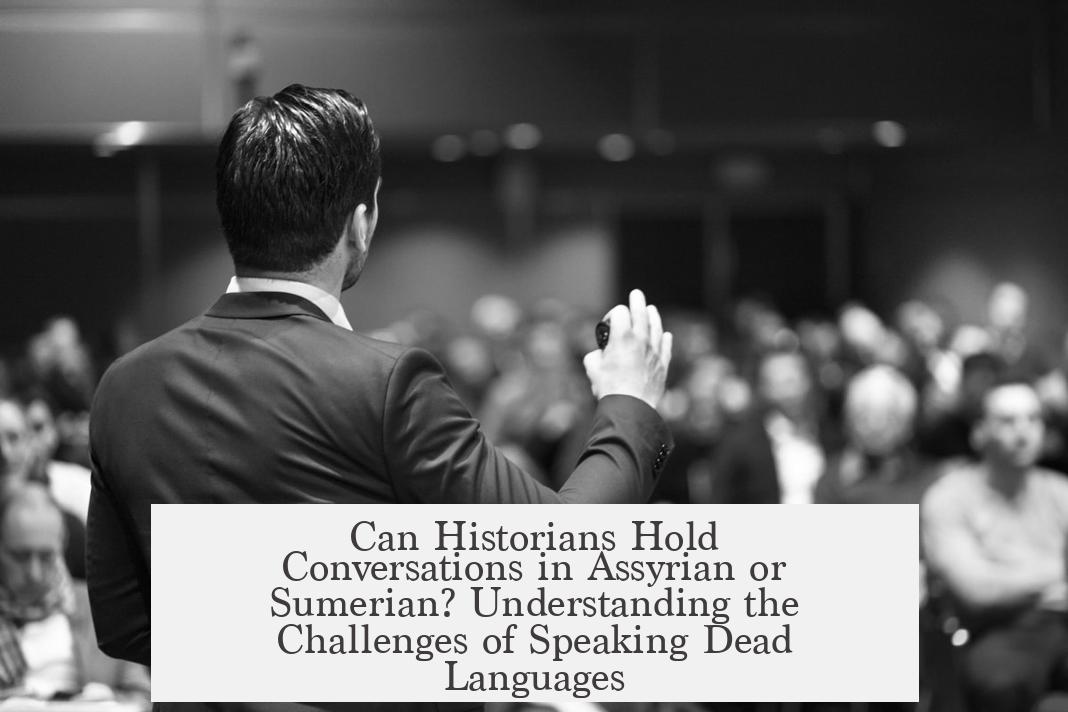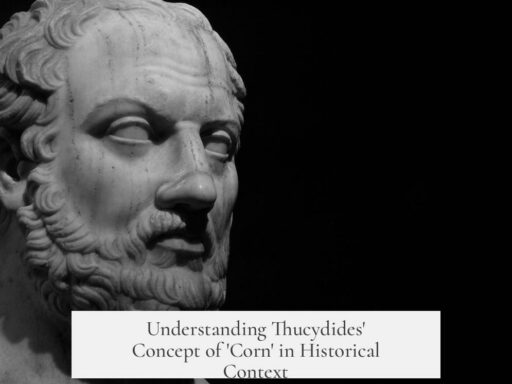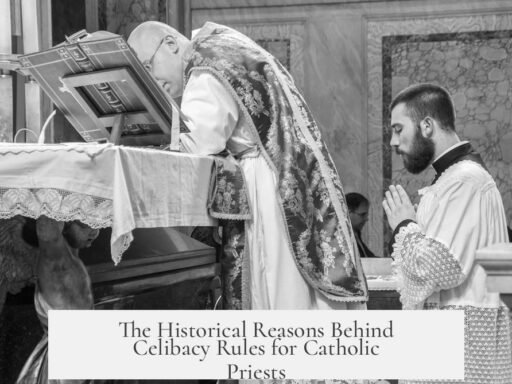Most historians who study dead languages such as Assyrian or Sumerian do not speak them fluently or use them in casual conversation. Their primary focus lies in reading and interpreting ancient texts rather than active spoken communication. Although some ancient languages, like Latin or Attic Greek, can be reconstructed and spoken to some degree, languages like Sumerian and Assyrian pose significant challenges to conversational use.

Historians typically engage with dead languages through reading and translation. The process requires passive vocabulary recognition rather than active speech production. Scholars often work slowly, referencing dictionaries and grammatical texts. As one expert notes, “learning to speak a dead language may be impossible (language depending) and would definitely require far more effort than needed just to read texts.” Most do not aim to reconstruct fluent spoken language but rather to understand cultural, literary, and historical contexts embedded in the written sources.
Speaking a dead language fluently involves various difficulties. First, the limited corpus of surviving texts often prevents fully comprehensive mastery. For instance, Sumerian and Hittite come with major gaps in vocabulary and syntax. Hittite’s pronunciation remains largely speculative due to its defective writing system.

Second, pronunciation itself is a major hurdle. Knowledge about how these ancient tongues sounded varies widely across languages. Ancient poetry and comparative linguistics help reconstruct approximate pronunciations, but scholars admit these reconstructions are often educated guesses, especially for languages extinct for thousands of years.
Third, languages evolve quickly. Even among better-known ancient languages like Latin, colloquial speech shifts drastically over centuries. The casual Latin of the 1st century BC differs significantly from Latin in later periods or classical literary forms. Therefore, even a well-reconstructed Latin speech might sound unnatural or “odd” to native speakers of another era.

Some dead languages maintain a spoken tradition. For example, Latin is sometimes taught more like a modern foreign language. Enthusiasts can engage in simple conversations or read the language aloud fluently. Similarly, Attic Greek can be spoken in reconstructed form using available phonological data, since it thrived in eras with rich literary and oral cultures. Middle English offers greater conversational possibility due to its proximity to modern English.
“If I really wanted, I could probably have a simple conversation in Middle English and Latin, but not in Sumerian or Hittite,” a linguist explains. This highlights how the feasibility of spoken use depends heavily on the language’s historical context and available evidence.

Certain languages adapt into modern forms preserving continuity with their classical versions. Classical Arabic evolved into Modern Standard Arabic, enabling speakers to approximate the Quranic language in everyday or formal speech. Tamil maintains a literary tradition that connects ancient and modern forms, making oral use more accessible. In contrast, Sumerian remains isolated from any living linguistic tradition.
Because the primary goal is reading and analysis, historians rarely practice conversational use of dead languages. They often can write speeches or compose texts in these languages for academic presentations but do not aim for spoken fluency. Academic training emphasizes grammar, syntax, and lexicon essential to interpreting historical records.

| Language | Conversational Viability | Comments |
|---|---|---|
| Latin | Moderate | Often taught conversationally; many can speak basic Latin |
| Attic Greek | Limited | Reconstructed pronunciation; possible conversations |
| Middle English | Moderate | Close to modern English; some conversational potential |
| Sumerian | Low | Large gaps in corpus; uncertain pronunciation; no fluent speech |
| Hittite | Very low | Defective writing system; undeciphered pronunciation; minimal usage |
Historians who specialize in dead languages prioritize understanding written materials over speaking. They rarely converse in these languages among themselves as fluent communication is impractical. Occasional attempts at revival or reconstruction appear mainly in academic or educational settings rather than everyday scholarly dialogue.
- Reading and translation remain the main focus for historians studying dead languages.
- Fluent spoken use is rare, limited mostly to Latin or Attic Greek.
- Pronunciation often relies on reconstruction and varies by language.
- Language evolution over centuries complicates conversational use.
- Sumerian and Hittite have limited corpora and uncertain phonology, hindering speaking ability.
- Conversational use among historians is uncommon due to practical and linguistic challenges.
Can Historians Speak Dead Languages Like Assyrian or Sumerian? A Closer Look

In short: No, most historians cannot speak dead languages fluently, and they do not have fluent conversations in Assyrian, Sumerian, or many other ancient tongues. Their main skill lies in reading and interpreting these languages, not speaking them. But why is that? What’s the challenge with speaking dead languages, and are there any exceptions? Let’s dive into this intriguing topic.
Dead languages like Assyrian or Sumerian are fascinating for historians and linguists. These scholars unlock secrets of ancient civilizations by studying texts written thousands of years ago. But reading a language and speaking it fluently are two very different skills.
Reading vs. Speaking: The Critical Difference
Most historians develop a passive knowledge of dead languages. They can recognize and understand words, phrases, and grammar structures as they appear in texts. However, they rarely use these languages actively. The scholar’s vocabulary is mainly passive, meaning they understand the language when reading, but don’t produce it spontaneously by speaking or writing creatively.
Why? Because the study of dead languages focuses on interpretation. Historians decode manuscripts, inscriptions, and tablets to learn about ancient societies’ economics, literature, and culture. Speaking fluently is not necessary for this goal, so it’s generally never pursued.
One expert sums it up perfectly: after working with Sumerian for 20 years, they can still not speak it. But that’s entirely fine. Their academic aim is to read original sources accurately, not chat with colleagues in Sumerian over coffee breaks.
Is Speaking a Dead Language Even Possible?
It depends on the language. Some extinct tongues are easier to revive for conversation than others. For example, Latin and Attic Greek stand out as exceptions. They’re ancient, but have large bodies of texts and well-studied grammatical structures. Latin, especially, is sometimes taught like a modern foreign language, offering chances to speak conversationally.
Conversely, languages like Hittite and Sumerian are far less forgiving. Their written records are limited, and pronunciation is often speculative. Hittite’s writing system is patchy, making it tricky even to identify proper sounds, let alone speak naturally.
Speaking a dead language requires more than just understanding vocabulary. Pronunciation demands special attention. Some languages have reconstructed pronunciation through poetry or comparative linguistics. Still, no one can know for sure if the spoken sounds match what ancient people actually used.
For example, an academic might write a Sumerian text or give a lecture with it but doubts an ancient native would understand them. However, fellow historians could catch on, as the speaking is often a reconstructed scholarly exercise rather than a genuine revival.
The Role of Language Evolution in Speaking Dead Languages
The passage of time adds another hurdle: languages evolve and change continuously. Even if you learn the colloquial Latin of the first century BC, you might sound odd to someone from the second century BC. Informal speech shifts fast, so reviving precise spoken forms is near impossible.
This radical shift also affects the possibility of having fluent conversations. If you tried speaking the Latin of Cicero to a Roman from just a century later, misunderstanding would be guaranteed. So even with a huge effort, perfect fluency remains out of reach for most dead languages.
Examples of Where Speaking Dead Languages Is More Feasible
- Middle English – Historians could potentially converse in Middle English with some effort. Since it overlaps with modern English, it’s more accessible. Still, avoiding anachronisms is tricky without extensive practice.
- Latin – Known to many, Latin has active speakers and is sometimes taught conversationally. Students can reasonably hold simple conversations in Latin, especially with a modern teaching approach.
- Attic Greek – Greeks of the Koine period often wrote and even spoke in a literary Attic style, making conversational use somewhat plausible in academic reconstructions.
- Classical Arabic and Literary Tamil – Modern Standard Arabic is basically updated Classical Arabic, and Literary Tamil adapts old Tamil forms for modern speakers. These represent living continuations or revivals rather than dead languages.
These languages show that when a living tradition or extensive study exists, conversational use is more achievable. For rarer dead languages without continuous tradition, such as Hittite or Sumerian, speaking fluently remains a dream.
Why Don’t Historians Speak Dead Languages More Often?
Is it laziness? Hardly. It’s about priorities and rewards. Learning to read ancient scripts is already super challenging. Adding spoken fluency demand escalates the effort immensely for limited benefit.
Academic goals usually center on textual analysis—not verbal fluency. Historians want to decode texts, interpret cultural context, and publish findings. They prioritize understanding over conversation.
Additionally, practical communication doesn’t require spoken dead languages. Within academia, modern languages dominate daily discussions. So, few bother to train the rare skill of speaking ancient tongues fluently.
Can Speaking Dead Languages Benefit Historians? Practical Perspectives
Some historians have attempted to experiment with spoken ancient languages. Doing so sheds light on grammar, syntax, and meaning that purely reading can’t reveal. Speaking emphasizes how sentences flow and how words relate in real time.
For instance, practicing spoken Latin can improve comprehension and memory. Engaging creatively with language might also enhance enjoyment and motivation.
Still, it’s important to remember the pitfalls. Pronunciations are partly reconstructed guesses. Conversations are usually with peers who understand the scholarly nuances. This speaking serves educational purposes, not practical daily use.
Summary: Why Don’t Historians Chat in Dead Tongues Over Coffee?
Because speaking dead languages fluently is incredibly difficult, highly uncertain, and offers little return for academic work focused on written texts.
Most historians diligently read and translate ancient languages. They rely on passive vocabulary, dictionaries, and reference tools. Active speaking skills in dead languages are rare and usually non-essential for their work.
Where oral tradition or continuous use survives, like in Latin or Classical Arabic, conversational skills are more common. Elsewhere, the mystery of ancient pronunciations and little incentive keeps dead languages firmly in the realm of silent scholarship.
So, the next time you wonder if historians chit-chat in Sumerian or Assyrian, remember—their conversations are probably happening in modern languages, while they silently parse tablet fragments behind the scenes.
Thinking Ahead: Could Technology Change the Game?
With advances in AI, machine learning, and linguistics, could we soon “hear” dead languages spoken fluently? Imagine virtual reconstructions of ancient dialogues or AI tutors for Assyrian conversation! While still distant, such innovations might revitalize the art of ancient speech in surprising ways.
Would you want to learn to speak Latin or Sumerian if an app made it easy? How would it change your experience of history? Food for thought!
Can historians speak dead languages like Sumerian or Assyrian fluently?
Most historians can read dead languages but cannot speak them fluently. Their goal is to understand texts, not to hold conversations. Speaking requires much more effort and reconstructing pronunciation is often uncertain.
Do historians have conversations in dead languages among themselves?
Generally, no. Dead languages have gaps in pronunciation and usage that make speaking them fluently very difficult. Scholars might write for academic purposes but fluent spoken conversations are rare or non-existent.
Are there any dead languages historians can speak conversationally?
Some, like Latin and Attic Greek, are more accessible for speaking due to larger corpora and teaching methods that focus on active use. However, languages like Sumerian and Hittite are nearly impossible to speak conversationally.
How does pronunciation affect the ability to speak dead languages?
Pronunciation is a major challenge. Many dead languages have limited or reconstructed pronunciation. This makes natural conversation impractical. Even with effort, the spoken form may not be fully understood by specialists.
Why do historians learn dead languages if not to speak them?
The main purpose is to read and interpret original texts accurately. Understanding society, history, and literature from primary sources requires reading skills, not speaking. This differs from learning modern languages.




